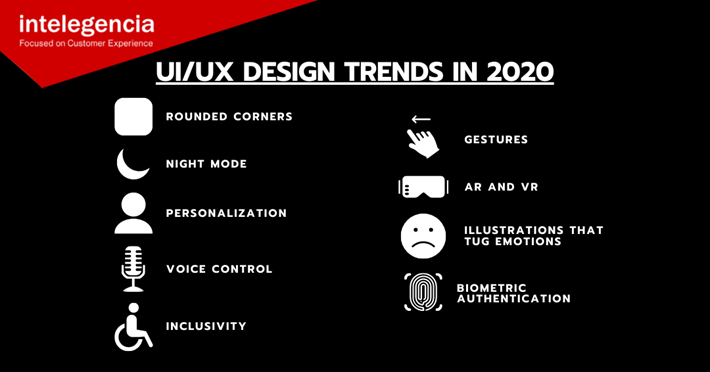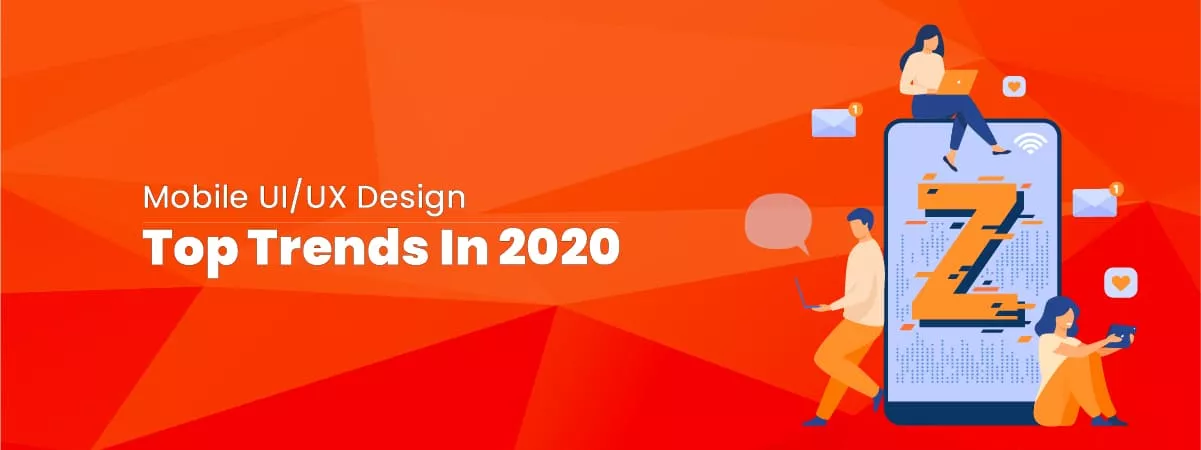Mobile UI/UX Design: Top Trends In 2020
 Justine Baylon
January 13, 2021
Justine Baylon
January 13, 2021
First impressions are crucial in the business industry. It can make or break a brand’s chances of making a sale. You’ll find that most organizations invest in their websites and storefronts to make it appealing to passers-by.
In the tech commerce world, the same regard is given for first impressions – except these come in the form of UI/UX design. The layout and overall design of an application’s interface are responsible for user journey and consumer loyalty. It could even be linked to the ROI of the platform. When you prioritize user-friendliness and good app design practice, you’re bound to reap the rewards of good UI/UX.
Of course, app design isn’t falling behind other tech innovations when it comes to mobile UX trends to look out for. As we approach the end of 2020, we continue to see new developments that shape app architecture. Let’s take a look at some of the top trends in the market and the innovation that we anticipate in the coming months.

Rounded elements are in – starting from corners.
Apps and app updates are making a few changes with its layout to accommodate new modern UI designs. One prominent trend that we’ve noticed is the preference towards round elements. It seems that more brands are leaning towards fluidity and continuity with buttons, sections, and app interfaces that sport curved corners.
It could also be an influence of the new smartphone curved corners that we see in recent models (affecting both Android UI design and iOS design guidelines). Whichever it may be, we’re certain that the rounded feel has a positive effect because of how smoother and easier it looks.
Night mode is replacing bright screens.
Albeit released much earlier, we saw Night Mode (also called Dark Mode) rise to popularity as users chose this setting over normal bright screens. Most apps have also adapted to this and rolled out their versions of low-light mobile UI design, such as Facebook, Twitter, and Viber.
Going beyond user preference, Night Mode also offers two advantages: Less use of battery power and reduced eye strain.
Personalization is as seamless as ever.
Artificial Intelligence and Machine Learning are making it possible for brands to create custom-tailored experiences for its users with the latest UI design trend. With features like product recommendations and chatbot interactions, companies are fostering a consumer-first culture that builds brand loyalty and attracts new buyers.
Because it’s becoming more popular and easy to implement, personalization is now considered an essential more than an added feature.
Shopping made easier with voice-powered apps.
Voice-controlled assistants similar to the popular technologies of Apple and Alexa made their way to the e-commerce world and the list of best mobile app designs by serving consumers from brand platforms. It’s a trend that we saw even more this year as companies worked hard to become digitally-present.
After helping us live our daily lives by assisting us in everyday chores, voice applications are now addressing customer queries within seconds. Any platform which hasn’t adapted this technology is already far behind in terms of the latest UI design trends.
Goodbye buttons, hello gestures.
Staying true to UI/UX design’s promise of intuitive interfaces, the new trend is now moving away from buttons (both physical and digital). Smartphone releases are focusing on gestures with screens that cover the whole face of a device.
Removing buttons from layouts also free up a ton of space, giving developers the freedom to add more text, photos, and other content without cluttering the screen.
AR is bringing fiction to the real world.
Ikea wasn’t the first to experiment with virtual and augmented reality with its Ikea Place application that displays realistically-rendered 3D products. VR and AR have long since amazed tech enthusiasts with its potential. It’s slowly making its way to the everyday user’s device.
Several areas of the economy, including science, real estate, travel, and education, have adopted AR and VR into several platforms.
Logins are facilitated by fingerprint or facial recognition.
Instead of remembering and typing passwords, applications are now leveraging fingerprint and facial recognition to offer password-less logins. With a quick tap or a look, users can access essential data while staying assured of security and privacy.
A huge number of brands implemented this new technology in pursuit of good app design practice. Even sensitive apps like online banking have also tapped biometric authentication for its platforms, alongside one-time passwords. While there are still a few gaps that need to be addressed to ensure maximum data security, the potential is definitely worth anticipating.
Features embrace inclusivity.
No two customers are the same. The best mobile app designs should be able to accommodate every potential buyer in every feature and aspect of the platform. That scope includes people with situational, temporary, or permanent disabilities.
UI/UX designs in 2020 are more considerate by rolling out features that embrace inclusivity, such as “Read Aloud” options and vibration feedback. These are but a few of the many creative ways that designers are creating better experiences for every customer.
Illustrations are created to tug emotions.
Further into mobile UX trends 2020, we see that visual content is no longer just expected to make screens and interfaces more appealing. Design takes a step further as illustrators experiment with new styles to produce an emotional effect.
Resonating with brands and brand values matter more today than it did in previous years. This shift in priority influenced even the creative aspect of the UI/UX industry to adjust to the latest UI design trends. The main objective is no longer simply adding color and fun to the screen, but associating with users on a deeper level.
Justine Baylon is a Multimedia Specialist at Intelegencia. When he is not working, he loves to dancing and keeping fit
Comment(s)
_BlogComment.Message
